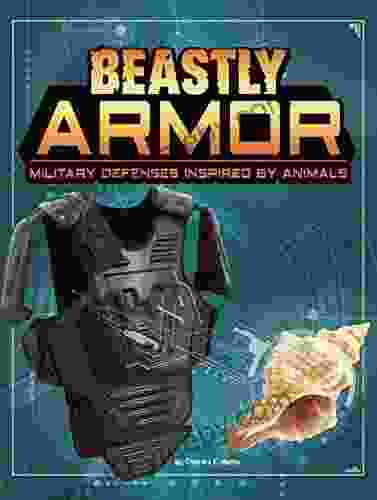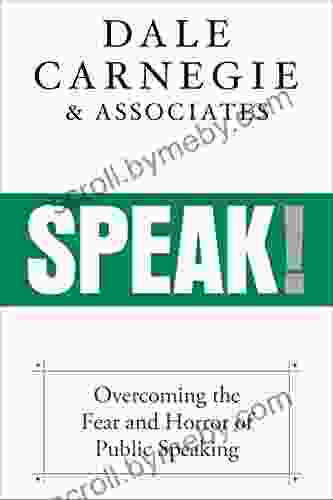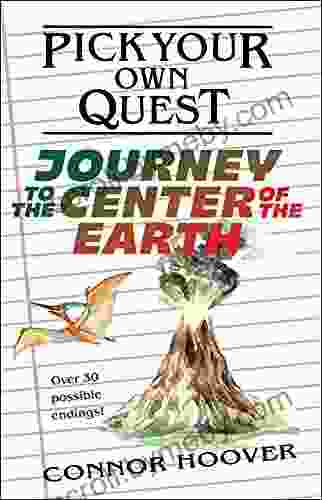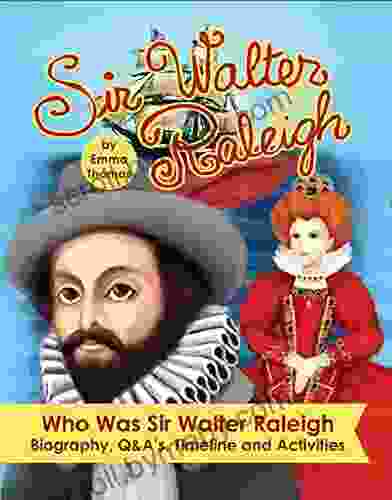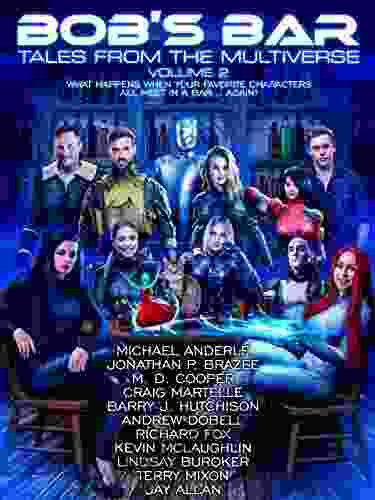Military Defenses Inspired By Animals: Beasts And The Battlefield

5 out of 5
| Language | : | English |
| File size | : | 12784 KB |
| Print length | : | 32 pages |
| Screen Reader | : | Supported |
By Dr. David Wharton
Throughout history, animals have served as a source of inspiration for military defenses. From the ancient Greeks, who used dolphins to protect their harbors, to modern armies, who have developed technologies based on the camouflage techniques of chameleons, animals have played a significant role in shaping the way we wage war.
In this fascinating book, military historian Dr. David Wharton explores the myriad ways that animals have influenced the development of military defenses, from the ancient past to the present day. With over 100 illustrations, this book is a must-read for anyone interested in the history of warfare or the natural world.
Table of Contents
- Chapter 1: The Ancient World
- Chapter 2: The Middle Ages
- Chapter 3: The Renaissance
- Chapter 4: The Enlightenment
- Chapter 5: The 19th Century
- Chapter 6: The 20th Century
- Chapter 7: The 21st Century
Chapter 1: The Ancient World
The ancient Greeks were the first to use animals in a systematic way for military defense. They used dolphins to protect their harbors, and they trained dogs to fight alongside their soldiers. The Romans also used animals in warfare, and they were particularly fond of using elephants.
One of the most famous examples of an animal-inspired military defense is the Trojan Horse. According to legend, the Greeks built a giant wooden horse and filled it with soldiers. They then wheeled the horse into the city of Troy and pretended to offer it as a peace gift. The Trojans were so flattered that they wheeled the horse into their city, not realizing that it was a trap. At night, the Greek soldiers emerged from the horse and opened the gates of the city, allowing their fellow Greeks to enter and conquer Troy.
Chapter 2: The Middle Ages
During the Middle Ages, animals continued to play a role in military defense. Knights often wore armor that was decorated with animal motifs, and they often used animals as symbols of their strength and courage.
One of the most famous examples of an animal-inspired military defense from the Middle Ages is the use of war elephants by the Mongols. The Mongols were expert horsemen, and they used their elephants to great effect in battle. The elephants were used to break through enemy lines and to stampede enemy soldiers.
Chapter 3: The Renaissance
During the Renaissance, there was a renewed interest in the natural world, and this led to a number of new animal-inspired military defenses. One of the most famous examples is the use of camouflage by Leonardo da Vinci.
Leonardo da Vinci was a brilliant artist and engineer, and he was also a pioneer in the field of military science. He designed a number of military machines, including a tank and a flying machine. He also developed a number of camouflage techniques, which were inspired by the way that animals use camouflage to hide from predators.
Chapter 4: The Enlightenment
The Enlightenment was a period of great intellectual and scientific progress, and this led to a number of new animal-inspired military defenses. One of the most famous examples is the use of semaphore by the French Navy.
Semaphore is a system of communication that uses flags or lights to send messages. It was invented by the French Navy in the late 18th century, and it was inspired by the way that bees communicate with each other.
Chapter 5: The 19th Century
The 19th century saw the development of a number of new technologies that were inspired by animals. One of the most famous examples is the use of the submarine.
The submarine was invented by the American inventor John Philip Holland in the late 19th century. Holland was inspired by the way that fish move through the water, and he designed a submarine that could move in a similar way.
Chapter 6: The 20th Century
The 20th century saw the development of a number of new animal-inspired military technologies. One of the most famous examples is the use of radar.
Radar is a system that uses radio waves to detect objects. It was invented by the British physicist Sir Robert Watson-Watt in the early 20th century. Watson-Watt was inspired by the way that bats use echolocation to navigate and find prey.
Chapter 7: The 21st Century
The 21st century has seen the continued development of animal-inspired military technologies. One of the most famous examples is the use of drones.
Drones are unmanned aerial vehicles that are used for a variety of military purposes. They are often used for surveillance and reconnaissance, but they can also be used to deliver weapons. Drones are inspired by the way that birds fly, and they have been shown to be very effective in a variety of military operations.
Animals have played a significant role in the development of military defenses throughout history. From the ancient Greeks, who used dolphins to protect their harbors, to modern armies, who have developed technologies based on the camouflage techniques of chameleons, animals have helped us to wage war more effectively.
As we continue to learn more about the natural world, we can expect to see even more animal-inspired military defenses in the future.
5 out of 5
| Language | : | English |
| File size | : | 12784 KB |
| Print length | : | 32 pages |
| Screen Reader | : | Supported |
Do you want to contribute by writing guest posts on this blog?
Please contact us and send us a resume of previous articles that you have written.
 Book
Book Novel
Novel Page
Page Chapter
Chapter Text
Text Story
Story Genre
Genre Reader
Reader Library
Library Paperback
Paperback E-book
E-book Magazine
Magazine Newspaper
Newspaper Paragraph
Paragraph Sentence
Sentence Bookmark
Bookmark Shelf
Shelf Glossary
Glossary Bibliography
Bibliography Foreword
Foreword Preface
Preface Synopsis
Synopsis Annotation
Annotation Footnote
Footnote Manuscript
Manuscript Scroll
Scroll Codex
Codex Tome
Tome Bestseller
Bestseller Classics
Classics Library card
Library card Narrative
Narrative Biography
Biography Autobiography
Autobiography Memoir
Memoir Reference
Reference Encyclopedia
Encyclopedia Rusty Ferguson
Rusty Ferguson Thea Guidone
Thea Guidone The Secret Libraries
The Secret Libraries Courtney Loquasto
Courtney Loquasto J J Cummings
J J Cummings Sally Moran
Sally Moran Cynthia Cooper
Cynthia Cooper Craig W Stanfill
Craig W Stanfill Crystal Allen
Crystal Allen Dale Lorna Jacobsen
Dale Lorna Jacobsen Cormac Mccarthy
Cormac Mccarthy George Serafeim
George Serafeim Colton Dubell
Colton Dubell D Bruce Means
D Bruce Means Clifford Geertz
Clifford Geertz Nancy Romita
Nancy Romita Colin Hunter
Colin Hunter Joanne Fink
Joanne Fink Dr B R Ambedkar
Dr B R Ambedkar Suzanne Jacobs Lipshaw
Suzanne Jacobs Lipshaw
Light bulbAdvertise smarter! Our strategic ad space ensures maximum exposure. Reserve your spot today!
 William WordsworthFollow ·9.4k
William WordsworthFollow ·9.4k Chandler WardFollow ·4.4k
Chandler WardFollow ·4.4k Cooper BellFollow ·19k
Cooper BellFollow ·19k Joshua ReedFollow ·6k
Joshua ReedFollow ·6k Eric HayesFollow ·15.8k
Eric HayesFollow ·15.8k Terry BellFollow ·10.5k
Terry BellFollow ·10.5k Clayton HayesFollow ·12.7k
Clayton HayesFollow ·12.7k Danny SimmonsFollow ·5.2k
Danny SimmonsFollow ·5.2k

 Cruz Simmons
Cruz SimmonsUnveiling the Secrets: An Insider Guide to School Bonds...
Unlock the Power of School...
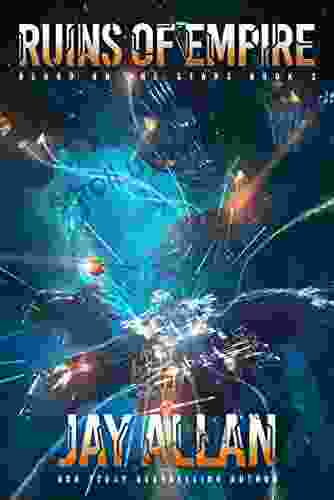
 Gil Turner
Gil TurnerRuins of Empire: Blood on the Stars - The Epic Space...
Ruins of Empire: Blood on the Stars is the...

 Allen Ginsberg
Allen GinsbergPrepare for the Ultimate Space Opera: Delve into The Last...
Embark on an...

 Anton Foster
Anton FosterUnleash Your Inner Artist: The Ultimate Guide to Oil...
Chapter 1: The...
5 out of 5
| Language | : | English |
| File size | : | 12784 KB |
| Print length | : | 32 pages |
| Screen Reader | : | Supported |


